Chapter 5, Part 3
At a heritage house in Kumarakom on the bank of Vembanad Lake, a part of Kerala’s iconic backwaters, I discovered one of the biggest surprises during the Spice Odyssey. On the day James and I arrived, we were served several dishes for lunch, including two or three types of curries and two fried fish encrusted with appetizing gold layer, a telltale sign of the amount of spices used to season them. As I savored the fish, familiar flavors burst in my mouth, reminiscent of my mother’s own version of fried freshwater fish. More than 4,000 km from where she lives, her cooking somehow followed me all the way to this corner of southern India.
This coincidence, however, shouldn’t have come as a surprise as relations had long been established between the peoples of southern India and their counterparts in Southeast Asia, including those in the sprawling archipelago that forms most of modern-day Indonesia. The Indians introduced cumin, coriander and pepper to Sumatra, Java and beyond, thanks not only to the thriving trade activities in the region, but also to the fact that centuries ago much of the archipelago adhered to Hinduism – a religion brought by ancient traders from India which then became the dominant faith in Southeast Asia for centuries.
More than a thousand of years of Indian presence in the archipelago allowed for cultural exchanges to flourish. Along with commodities and religious texts, the Indians also took their dishes with them, which were eventually introduced to the locals. Intrigued by the exotic flavors, the locals then applied some cooking techniques commonly practiced across the islands at that time to make variations of the foreign cuisines. The Indians, on the other hand, brought the recipes of these new creations back home, which have been adopted there ever since.
Idli, a traditional savory cake usually consumed for breakfast in southern India, is an example of a dish born from such cultural exchange. Originally made from black gram, buttermilk, curd and spices, the modern version of idli is also made from rice which are then all mixed together, fermented and steamed. The last two food preparation methods are believed to have been introduced to the Indians by the people of a region that is now Indonesia.
Many new things made their way to Maritime Southeast Asia from west of the archipelago, so much so the word for west in Indonesian and Malay is barat, derived from Bharata then Bharat – the Sanskrit name for the Indian subcontinent itself. Yet, not all dishes that originated in India became popular in Southeast Asia. Dal (split lentils consumed all over the subcontinent) and papadum (thin crisps usually made from black grams, lentils or chickpeas) are among those that remain widely consumed in South Asia but are hardly found in Indonesia today.
However, one type of dish managed not only to survive the far distances it traveled and the test of time, but it also inspired the creation of a wealth of new dishes customized to local tastes across the region. Curry and its variations, usually made by adding a generous amount of mixed spices and herbs into coconut milk (or yogurt in northern India) to make a rather thick gravy into which protein is then added, have now become much-loved cuisines, particularly in western part of Indonesia, Malaysia, Singapore and Thailand – where galangal and lemongrass are often added to give the dishes a distinctively Southeast Asian flavor. West Sumatra is particularly well-known for being home of some of Indonesia’s most famous dishes, including rendang. The province’s curry-like dishes, however, are a result of the intermarriage between Indian influences and new ingredients which were about to be introduced by the Europeans who would alter the global political landscape as they searched the Spice Islands and explored the world on a scale like no other had ever attempted before.
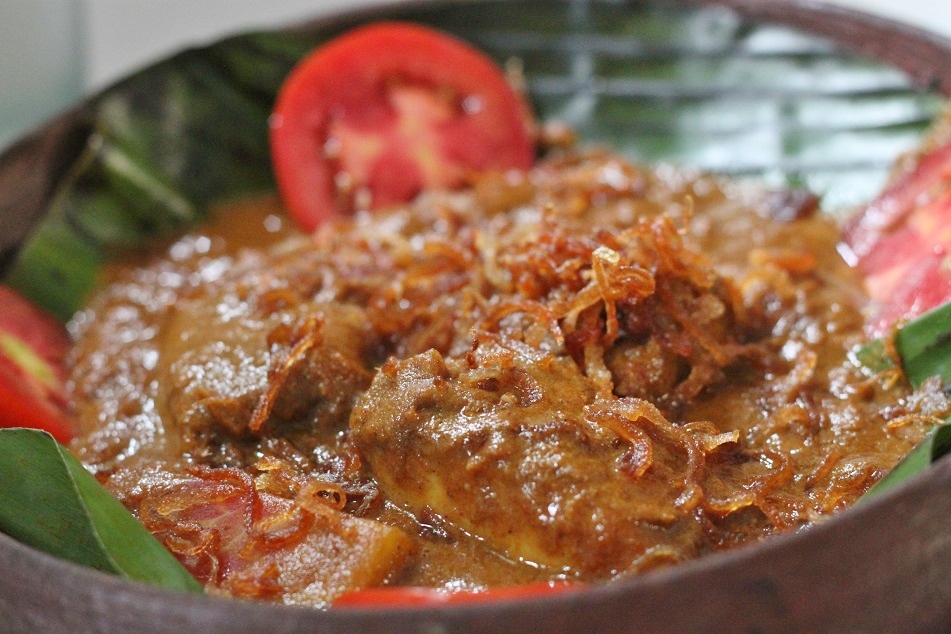
Fish Varutharachathu (Fish Cooked with Roasted Coconut Paste and Coconut Milk), A Keralan Syrian Christian Dish

Meen Kallel Chuttathu (Green-Chili-Marinated Fish Grilled in Banana Leaf), Served with Lemon Rice and Yogurt
Click here for the full list of stories from the Spice Odyssey series.





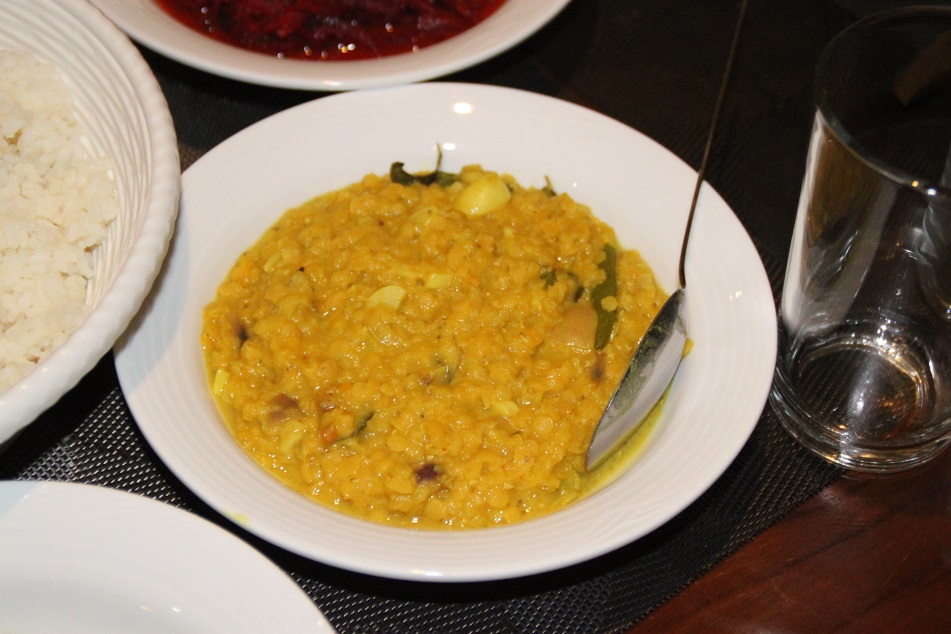

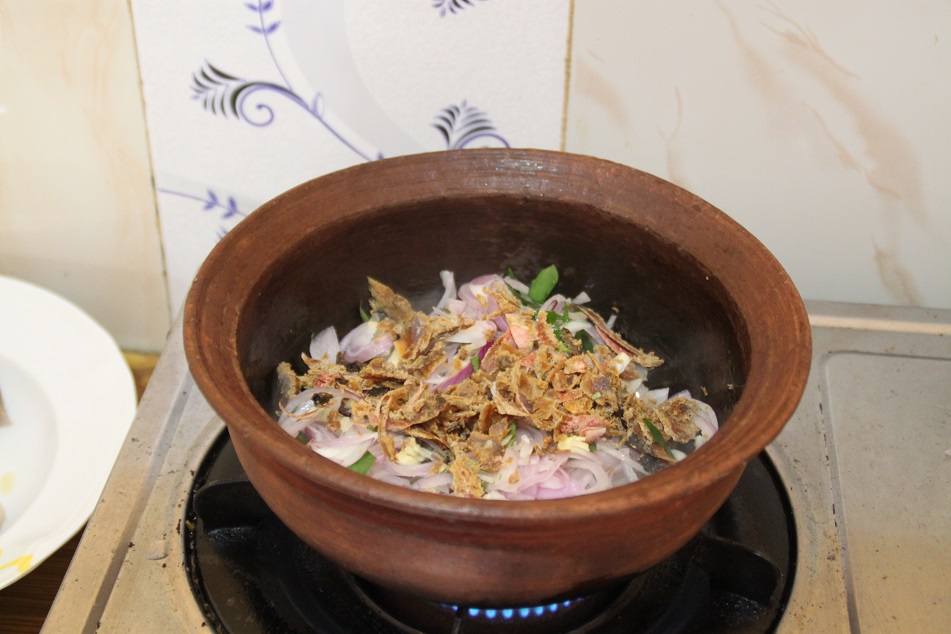







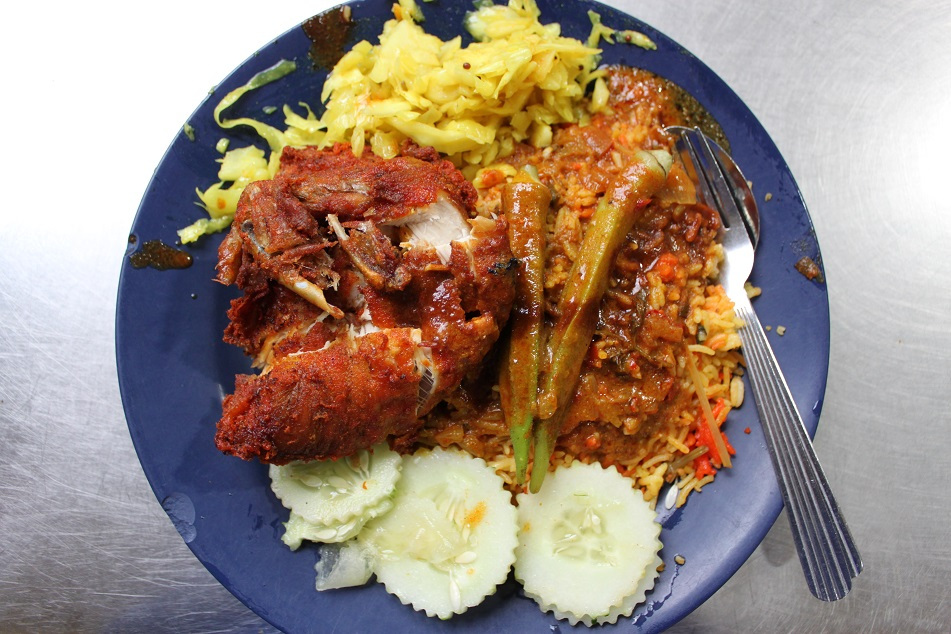

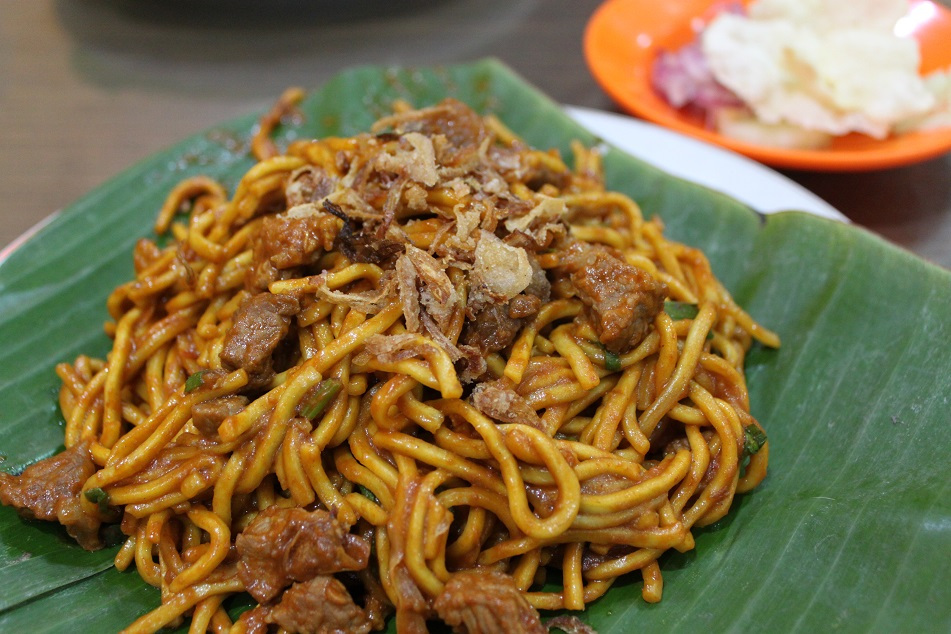

Looks amazing! My mouths watering! Good stuff! You’ve got my follow. Check out my comedy blog and give it a follow if you like it!
LikeLike
Appreciate your kind words! Glad you enjoyed this post.
LikeLiked by 1 person
I’m so glad I read this on a full stomach, Bama. The food was clearly the best thing about Kerala – I guess both of us have a preference for Indian west coast dishes because of their balanced flavors and similarity to Indonesian cooking. When we realized that “barat” in Indonesian/Malay corresponded to the Sanskrit name for India, it instantly made perfect sense. That was quite the eureka moment!
LikeLike
It was worth walking all the way to that restaurant — everything was so tasty! The food and Kathakali definitely made up for our rather unpleasant experience in Kochi. If there was a Keralan restaurant in Jakarta, I think I would have gone quite often. As for the cardinal directions, I’m still wondering how we got the word “timur”.
LikeLiked by 1 person
Is Timur North?
LikeLike
North is Utara in Indonesian, from Uttar, I believe.
LikeLiked by 1 person
Yes, Uttar in Hindi, Uttara in Sanskrit. What’s Timur?
LikeLike
Oops, I forgot to answer.. Timur means East. I haven’t learned about the etymology, though.
LikeLike
Your tantalizing photos made me want to pack my bags and head for these places for no reason except eating. Rich colors and appearance of crispiness make all the dishes look quite delectable!
LikeLike
Thanks Marilyn! Crazy it might sound, but I think if you do decide to go all the way to this part of Asia just to eat, you wouldn’t regret it. Oh and most local dishes are usually really cheap!
LikeLike
The pictures of the spicy food on the plates look so real one feels one only has to reach out to savour the food many thousands of miles away/ Great post!
LikeLiked by 1 person
I wonder if one day that would actually come to reality, when people can grab anything from their laptop screen — sounds exciting and scary at the same time! Really appreciate your kind words, Peter, as always!
LikeLiked by 1 person
Interesting compilation on the shared culinary history of South East Asia.
Ausi | http://www.wanderfulweekendz.com
LikeLike
Thanks Ausi. Traveling to southern India really opened my eyes as I learned about its historical connection with Southeast Asia which is rarely told.
LikeLiked by 1 person
It’s the same here in India. It’s a connection that is rarely talked about. I was amazed to find about the trade links between South India and South East Asia when we visited this small town in Tamil Nadu known as Chettinad. You might like reading about it: https://wanderfulweekendz.com/2016/11/03/chettinadu-chaska/
LikeLike
I heard about Chettinad a few years ago from an Indian blogger friend who wrote about it. Seeing it again through your photos really makes me want to explore India again. There are a lot of history between where we live, but many stories have been forgotten, waiting to be rediscovered by curious souls.
LikeLiked by 1 person
True that!
LikeLike
The butterfish curry looks so tempting! *water drooling*. I shouldn’t read your blog after dinner 🙂
LikeLike
That butterfish curry was among my favorite dishes in Myanmar. As you can imagine, it was so buttery, tender, succulent, and rich. Maybe I should have added at the beginning of this post, “Read this on a full stomach.” 🙂
LikeLiked by 1 person
As others have said Bama this has left my mouth watering. At one point I thought i might need to get a serviette to prevent any drooling on the keyboard. What a collage of deliciousness. Fascinating about the cultural exchange and the history of sharing cuisine. You could easily be the guide of a food tour. Actually I think I might need a guide to assist in food choices of the immense selection.
LikeLike
Lol, I hope this post doesn’t cause trouble to anyone. Thanks Sue! Learning about the region’s food history has been eye-opening for me. Until a few years ago I was mostly unaware of the story behind the dishes I usually had, but that six-month trip across South and Southeast Asia changed everything. Having someone to explain about the local food when you travel really is a big plus. Otherwise, you can learn from the expert by taking a cooking class.
LikeLiked by 1 person
That’s a great idea about the cooking class. Although I’m not much of a cook. Maybe I can be a taster? 🙂
LikeLike
Haha, yea.. In many cases tasting food is more fun than preparing it. 🙂
LikeLiked by 1 person
I don’t get nasi Kandar in Penang, gak ngerti enaknya dimana, atau mungkin belum ketemu yang cocok di lidah ya
Tapi foto2 makanan yang lain sih menggugah selera, semoga tidak terbuka nanti pas bulan puasa, hahaha!
LikeLike
Aku nyobain yang di Line Clear itu sih. Enak-enak aja menurutku *anaknya gampangan*
Yang pasti seingetku porsinya lumayan banyak sih. Puasa masih beberapa minggu lagi. Ayo puas-puasin liat foto makanan! 🙂
LikeLike
Masya Allah, kayanya masakan Asia Selatan yang terpengaruh India ini gak bakal ada yang gagal di lidah ya. Sudahlah pengisinya macam-macam, rasanya beragam, penampilannya ajaib pula.
Aku penasaran deh sama beetroot curry dan umbalakada. Itu namanya lucu aja, umbalakada. O iya, Idly juga dink. Ah semuanyaaaaa … *lalu jadi gelap mata*
LikeLike
Terutama yang dari Kerala. Legit, lembut, pokoknya pas banget di lidah Indonesia menurutku. Kalau makanan India bagian utara aku kurang suka sama keasaman dari yogurt sih. Dan makanan yang enak-enak di Kochi ini berhasil membantu menaikkan mood setelah mengalami beberapa hal yang kurang menyenangkan di sana.
Naaah kalau yang dari Sri Lanka, karinya gak se-mahteh di India. Lebih nyaman di lidah, meskipun jadinya buat sebagian orang mungkin kurang nendang. Umbalakada itu kurang lebih semacam cakalang yang diasinkan, meskipun gak mirip-mirip banget. Onion sambol biasa aja udah enak. Begitu ditambah umbalakada… beuh! Kalau beetroot cenderung manis sih.
LikeLiked by 1 person
Kayanya banyak yang bilang kalau masakan Kerala itu enak-enak deh. Di sini teman kerjaku juga pada bilang begitu. Kebetulan, ada satu teman juga yang bapaknya asli Kerala, tapi sudah jadi warga Negara Indonesia. Dia selalu cerita, bahwa masakan Negara bagian Kerala itu sedap. Jadi bikin penasaran.
Aku bayanginnya, umbalakada ini dimakan begitu aja pakai nasi pasti udah enak. Eh jadi ingat ikan tongkol lodo ghorom khas Natuna/Anambas. Udah pernah coba belum Bam?
Beetroot ini karena warna merahnya, aku kaya agak gak tega gitu mengkonsumsinya. Di jus aja aku hindarin 😀
O iya, onion sambol itu kaya sambal dabu-dabu kah?
LikeLike
Mungkin karena beberapa bahan dasarnya mirip sama masakan di sini. Misalnya di Kerala mereka pakai santan, bukan yogurt. Terus nasi, bukan naan — oh jadi inget nasi Kerala yang bulirnya gede-gede dan pulen banget!
Umbalakada dimakan pake nasi anget pake sambel kayaknya enak deh. Nah lodo ghorom ini aku baru denger malah. Lodo ghorom itu maksudnya lada garam atau ada arti lain? Onion sambol beda sama sambal dabu-dabu, Bart. Kalo dabu-dabu kan pedes, seger gitu. Kalo onion sambol itu lebih ke gurih sih. Duh jadi lapaaar!
LikeLiked by 1 person
Mari kita makaaaaan …
Hmm kayanya sih lodo ghorom itu maksudnya lada garam ya. Dan pengucapan huruf ‘r’ di ghorom nya itu kaya pelafalan di bahasa Prancis lho. Simpan ‘r’ nya di tenggorokan. Hmmm rasanya pedas-pedas enak masakan melayu lah. Harus coba. Mau tak kirimi piye?
LikeLike
Wow, aku jadi makin penasaran sama Anambas & Natuna nih. Daripada ngirimi aku, mending tak samperin ke sana. *demi lodo ghorom yang r-nya kayak di Bahasa Prancis* 🙂
LikeLiked by 1 person
Monggo Bam, ditunggu lho di Anambas-Natuna 🙂
LikeLiked by 1 person
West-Bharat; thankfully we don’t call north as Chungkuo! Wonderful post as always Bama, thanks!
LikeLiked by 1 person
It’s interesting to learn about the etymology of the cardinal directions in Indonesian. Utara was derived from uttar (which means north in Sanskrit), while selatan was said to be used to describe south of Malacca (which is the Strait of Malacca — hence selat-an). I’m still curious about timur though, and wonder if it has anything to do with Timur/Tamerlane. Thanks Suwandi!
LikeLike
I must agree with everyone else that this was a particular mouthwatering post! I love how you weave so much history into the flavors, spices, and types of food you find on your travels.
LikeLike
Thanks Lex! I was also fascinated by the journey dishes took to evolve into things people eat today. The history, the past connection, there’s so much more than meets the eye, and we’ve been taking whatever we consume in regular basis for granted.
LikeLiked by 1 person
Am definitily hungry now, but I can go and gave sone delicious jackfruit and or fish curry in an instant. Ah the joys of living in Sri Lanka.
I definitely enjoy Southern Indian cuisine more than that of the North…it is lighter and uses more coconut, a lovely addition.
Your photos and descriptions are sunptous!
Peta
LikeLike
Maybe because I’m more used to having coconut milk in the dishes I eat in Indonesia and yogurt for dessert, North Indian flavor was rather an acquired one. Fortunately I’m replying to this comment just before having dinner, because imagining those delicious dishes in Kerala really makes me hungry!
Speaking of jackfruit, when you come to Java one day, make sure not to miss gudeg. It’s a jackfruit-based dish served with several sides. Yum!
Thanks for your lovely comment, Peta.
LikeLike
What a wonderful entry on such mouthwatering dishes. Now I am craving the recipes? 😀
LikeLike
Thanks for your really kind words! Ahh, the recipes. Most of the time I never get the recipes of the dishes I try when I travel. But when I do, I usually trust my housemate to cook those dishes. 🙂
LikeLike
Pingback: Food Nationalism | What an Amazing World!
Hi Bama, those are really amazing pictures! Can make anyone feel super hungry and your narration🤘🤘🤘🤘
LikeLike
Thanks Charu! Your kind comment really made my day. 🙂
LikeLiked by 1 person
How have you been? I’m visiting your blog after a long time and how much more appealing and interesting it is now🤘🤘🤘 not to mention with huge huge following ☺️☺️ Great work…
LikeLike
After that long trip I did back in 2015, I still travel every now and then, relying on the very limited annual leave I get. Since the Spice Odyssey series is over, this weekend I will publish a long overdue post on Osaka, then followed by posts from Vietnam, Indonesia, and other places in the region. Glad to have you back! And thanks again for reading.
LikeLiked by 1 person
This post reminds me I need to get to Sri Lanka soon. Fantastic photos as always Bama. That opening shot of the karimeen fry practically leaps off the page 🙂
LikeLike
I remember a few years ago you were planning to go, but it got cancelled. The good news is, Sri Lanka is so close to where you live, so you can ‘just go’. 🙂 I leaped off my chair when I had that karimeen fry. Such a nice surprise in a place faraway from home. Thanks Madhu!
LikeLike
Everything looks so yummy!
LikeLike
Hi Krešo. You should travel to this part of the world, and see how the food inspires you to create dozens of new recipes! 🙂
LikeLiked by 1 person
I’m certainly planning to do so 😀 I can only imagine what a culinary adventure it will be!
LikeLiked by 1 person
I read this on an empty stomach and the fab pictures made it worse.The food connection is truly fascinating!
LikeLike
Thanks Sheela. I’m glad you enjoyed this post. Hailing from South India, I think you would enjoy a lot of Indonesian dishes, and you’d probably notice some similarities with the food back home.
LikeLiked by 1 person
After reading this excellent post I think so too!
LikeLike
Reblogged this on Life Begins At Trendy.
LikeLike
Another informative post. Like it!
LikeLike
Never knew the word we use for west here in Indonesia refers to India. Then everything starts to make more sense, including the cultural connections reflected on the food on both sides of the Indian Ocean.
LikeLiked by 1 person
I am a North Indian, vegetarian. However, there are several South Indian restaurants in Delhi that serve the same taste. How authentic, I am not sure.
I am impressed the way you have narrated everything in this post.
LikeLiked by 1 person
Hi Rajat. Thanks for sharing your thoughts. I hope one day I’ll get to sample as many North Indian dishes as possible and write about them.
LikeLiked by 1 person